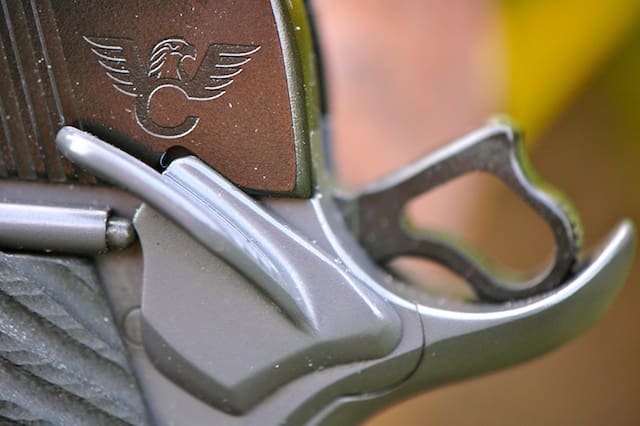By John Sprague
There is a large contingent of gun users — many of them here — who are adamant that the only safety a gun needs is some self-control over the use of your booger hook. I would like to present an alternative view.
Manual safeties are not the enemy of readiness that some would have you believe. We can probably agree that the highest state of readiness a gun owner can achieve is to have a gun in each hand pointing at anyone who might possibly pose a threat to your or your family. Obviously, that’s not terribly safe or practical. So we have to start making a few concessions to bring our state of readiness into balance with practicality and safety.
Instead of lasering everyone who comes near us, we could leave one gun in the safe and carry the other in a low-ready position with our pistol pointing downward at a 45° angle. Since that’s only a little less practical way to ward off an attack, we can then practice transitioning from the low-ready to on-target.
But if walking around with a pistol in low-ready all day doesn’t work for you — and I’m fairly sure it won’t — you might consider carrying your firearm (and I’m just blue-skying here) in a leather or thermoplastic holder thingy that attaches conveniently to your hip.
Now we’ve managed to increase the safety factor dramatically. At the same time, though, we’ve sacrificed a fair amount of readiness. So, as always, it comes back to training.
That means you’ll have to practice drawing your gun and transitioning to your target. You can carry this logic all the way to keeping your pistol secured with a gun lock, in a case, in the trunk of your car with the ammo in the glove box. The safety factor of this condition is, naturally, through the roof. But your state of readiness and the practicality of being able to defend yourself will have disappeared almost completely.
Somewhere in the middle lies your particular personal state of safety/readiness balance. Everyone needs to find their own acceptable equilibrium between safety and readiness. For some, a manual safety is one tick too far toward the safety side and away from readiness.
For me, though, it’s the perfect compromise. I practice for my state of carry. I use a holster. I use a gun with a grip safety. I use a gun with a manual safety, too. I practice and train for this carry condition so that if and when I have to use my gun to defend myself, drawing, disengaging the safety and bringing the gun to bear are part of one continuous motion.
I once found myself in a position during which I had to draw my weapon in a high stress, adrenaline-dump situation. When I pulled my piece, I flipped off the safety automatically. Why? Because I had trained myself to lift my conceal garment, establish a proper grip, draw the gun, flick off the safety and bring the sights up to the target – all in one fluid motion.
Lo and behold, what I had trained for is exactly what happened when the time came. Some say that in a high stress situation you’ll become all thumbs and “forget” to flip off the safety. I beg to differ. I believe that what you train for, what you rehearse, what you drill into muscle memory is what will happen when it’s needed most.
If the manual safety tips your particular scale too far to one side then by all means, don’t use one. For me, the benefits and peace of mind a safety provides are perfectly balanced with the incremental reduction in readiness.
Whatever you do, find your own balance.
